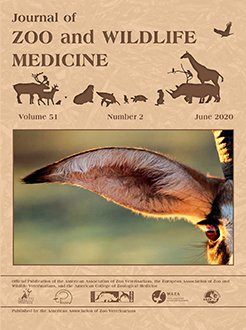This study aimed to evaluate the ophthalmic parameters, morphometric features of corneal tissue, and arrangements of corneal stromal collagen fibers in crab-eating fox (Cerdocyon thous), a species of neotropical wild canid. We conducted the study on six juvenile crab-eating foxes (12 eyes), whilst 16 eyes were obtained post mortem from eight adult crab-eating foxes. The research was divided into two stages. In the first stage, eye anatomical characteristics, tear production (Schirmer 1 tear test, STT1), intraocular pressure (IOP), ocular echobiometry, and specular microscopy parameters related to morphology of corneal endothelium were studied in juvenile animals. In the second stage, morphometric features of corneal tissue (central corneal thickness [CCT] and corneal epithelium thickness) and arrangements of stromal collagen fibers were studied using eyes from adult animals. The main findings were that crab-eating fox eyes have vertical-slit pupils, holangiotic retina, and reference values (mean ± SD) of 13.37 ± 3.79 mm/min for STT1 and of 10.43 ± 3.84 mmHg for IOP. The ocular echobiometric features observed in crab-eating foxes are different from those reported for domestic dogs (Canis familiaris). Conversely, the corneal endothelial parameters are similar to those of domestic dogs. The CCT measured by tissue morphometry was 0.54 ± 0.06 mm, and the corneal epithelium thickness was 60.13 ± 8.71 µm. Mean coherency related to alignment of collagen fibers was 0.66 ± 0.12. The crab-eating fox cornea had predominantly thick collagen fibers. Crab-eating fox eyes have morphofunctional peculiarities. They resemble the eyes of domestic dogs in some aspects, but diverge in others.
How to translate text using browser tools
12 June 2020
THE EYE OF CRAB-EATING FOX (CERDOCYON THOUS): ANATOMICAL CHARACTERISTICS AND NORMATIVE VALUES OF SELECTED DIAGNOSTIC TESTS, MORPHOMETRY OF CORNEAL TISSUE, AND ARRANGEMENTS OF CORNEAL STROMAL COLLAGEN FIBERS
Roberta Renzo,
Marcela Aldrovani,
Roberta M. Crivelaro,
Roberto Thiesen,
Alexandre A. F. de Barros Sobrinho,
Camila P. Balthazar da Silveira,
Amanda P. Garcia,
Gabrielle C. S. Campos,
Karin Werther,
José L. Laus
ACCESS THE FULL ARTICLE
carnivores
cornea
Crab-eating fox (Cerdocyon thous) ocular structures
ophthalmic parameters
wild





